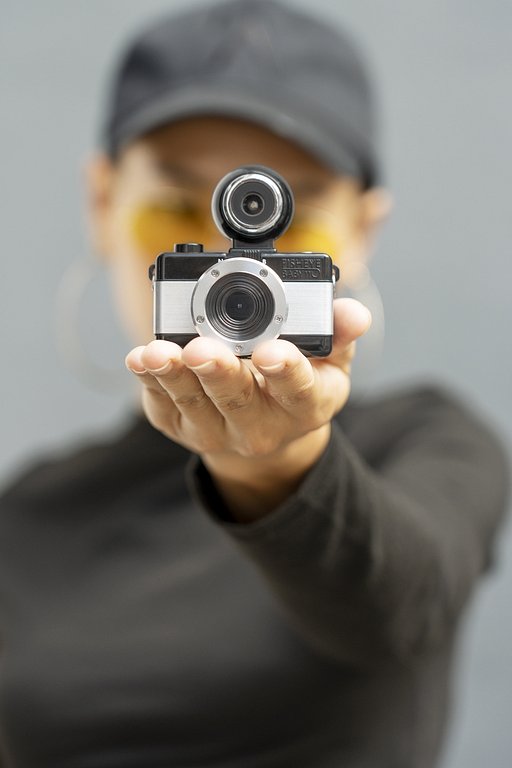Surrealism: Photography Beyond Logic and Reason
3 13Everyone’s poster boy for Surrealism, Salvador Dali, has always been fascinated with photography and the camera.
Roger Rothman wrote in Tiny Surrealism: Salvador Dal and the Aesthetics of the Small: “Thus, did Dali conclude, ‘nothing will prove surrealism right as much as photography’.”
With this, we tackle the most game-changing art movement in the history of photography.
The motivation behind Surrealism: reason vs. imagination
Surrealism as an idea came to be after the First World War, and it often had an anti-war slant to it. But the proper movement started with one man’s printed words. His name was Andre Breton.
Breton was a French artist and an original member of Dada (where Cubism and Expressionism also formed), a group in New York that endorsed “automatism and intuitive art”. He worked with mixed media, often trying to join words and images together to create art. He worked for renowned psychologist Sigmund Freud as well. Freud was the one to pioneer a study of the subconscious, which, according to Art History Unstuffed, greatly influenced Breton’s writing and idealism for a superior reality.

Later on he wrote the Manifesto of Surrealism, in which he fleshed out the whole concept of the movement. It was the antithesis of the pervading classical art and literary principles of imitating the realness and exactness of the actual subject.
Breton’s textbook definitions of surrealism:
Dictionary: Surrealism, n. Pure psychic automatism, by which one proposes to express, either verbally, in writing, or by any other manner, the real functioning of thought. Dictation of thought in the absence of all control exercised by reason, outside of all aesthetic and moral preoccupation.
Encyclopedia: Surrealism. Philosophy. Surrealism is based on the belief in the superior reality of certain forms of previously neglected associations, in the omnipotence of dream, in the disinterested play of thought. It tends to ruin once and for all other psychic mechanisms and to substitute itself for them in solving all the principal problems of life.
Breton also promoted the idea of spontaneous, true and unrestrained beauty of imagination with surrealism. The Met confirms Breton’s belief, stating that Surrealists believed that reason hindered the mind’s full potential of imagination. They art organization writes, “Their efforts to tap the creative powers of the unconscious set Breton and his companions on a path that carried them through the territory of dreams, intoxication, chance, sexual ecstasy, and madness.”
Surrealism, in simplest terms, is an art movement in which imagination is at its rawest, unhindered by the mind, completely following man’s sensations and doings of the unconscious.
Surrealist photography: how they did it with traditional techniques
When surrealism was talked about in the realm of photography, many critics doubted the capability of the camera to capture an imagined reality; but all doubts were disproved by the works of Man Ray. He became the poster boy for surrealist photography with his famous rayographs.
Everything about surrealist photography seemed highly experimental and unconventional, especially in terms of composition. Man Ray was popular for using solarization, double or multiple exposure, montage and layering. Photographers Maurice Tabard, Hans Bellmer and Dora Maar used rotation or distortion and even welcomed the ugly.
Other trends within Surrealism that also apply to photography are floating subjects, defiance of science and repetition. Art History Archive writes, “A very common Surrealist technique is the juxtaposition of objects that would typically not be together in a certain situation or together at all. This has been described as “beautiful as the encounter of an umbrella and a sewing-machine on a dissecting table” (de la Croix 710). Juxtaposition can be used to show a metaphor or to convey a certain message.”
Emergence and its influence in the contemporary art scene
Surrealism remains a strong force of influence not just in photography and arts, but also in literature, and its influence can be found all over the contemporary art scene.
Visual Arts Cork says of surrealism today: “The influence of Surrealism as a style of art can be found in a wide variety of modern and contemporary schools – notably, early Abstract Expressionism, Pop-Art and Conceptualism – and permeated nearly all contemporary art forms, including Assemblage, Installation and Performance.”
In Surrealist photography, mixed medium works and photographic collages are very popular in the contemporary scene. Surrealist photography now also extends to the digital medium, whether staged or post-processed. Photography remains one of the most preferred art forms today, thanks to Surrealist photographers who took the camera to another visual reality.
écrit par Ciel Hernandez le 2016-03-26 dans #lifestyle #salvador-dali #surrealism #man-ray #surrealist-photography























3 commentaires